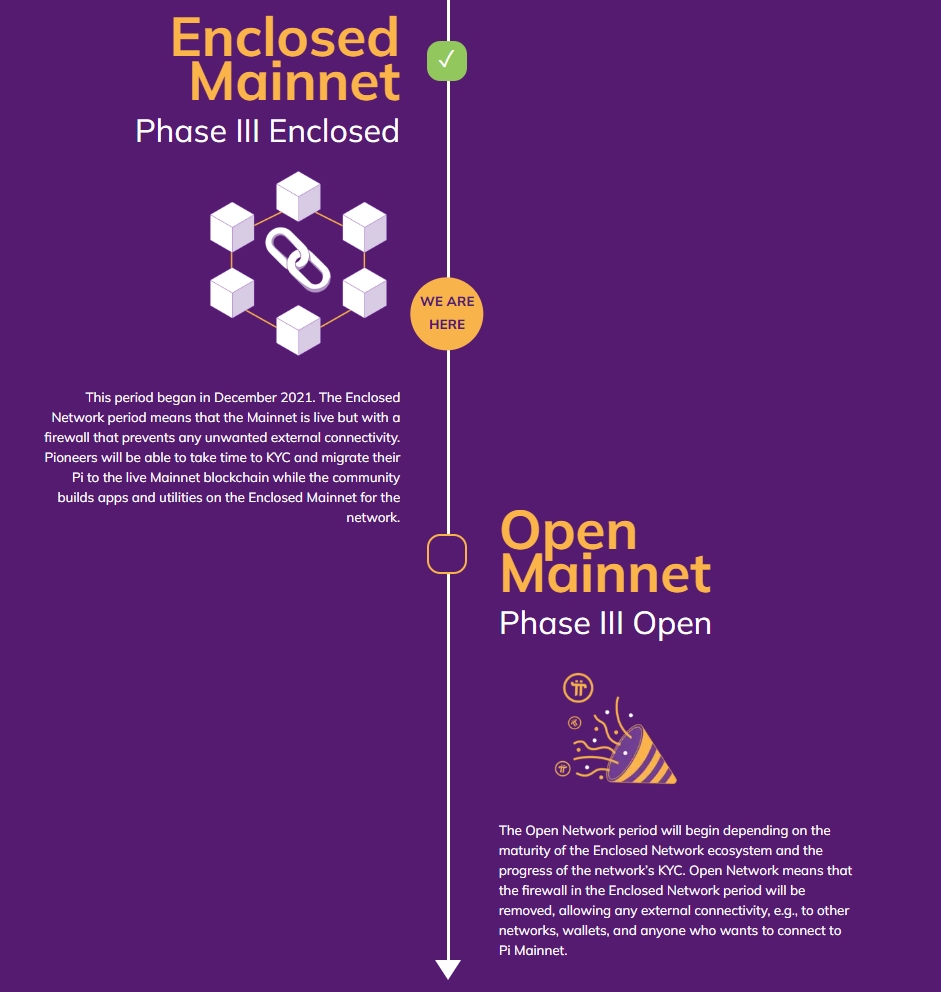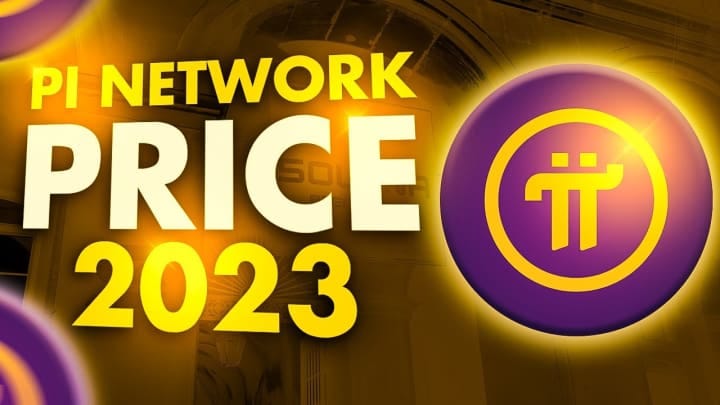What Will Pi Network Look Like In 2030? Future Predictions

Executive Summary

Predicting the future of any cryptocurrency, especially one as novel as Pi Network, is inherently speculative. However, by analyzing current trends and technological advancements, we can formulate plausible scenarios for Pi’s potential trajectory by 2030. This article explores various factors influencing Pi’s future, including its mainnet launch, its adoption rate, its technology evolution, its governance structure, and the broader cryptocurrency market landscape. We will examine optimistic and pessimistic projections, offering a balanced perspective on Pi Network’s possible state a decade from now.

Introduction
Pi Network, a cryptocurrency mined through a mobile app, has captured the attention of millions. Its unique approach to mining, designed for accessibility, sets it apart from other cryptocurrencies. However, its future remains uncertain, depending on a variety of factors, including successful mainnet launch, widespread adoption, and the overall health of the cryptocurrency market. This article delves into possible scenarios for Pi Network in 2030, offering insights into its potential growth and challenges.
Frequently Asked Questions (FAQs)
-
Q: Will Pi Network be valuable in 2030? A: The value of Pi in 2030 is highly speculative and depends on several factors, including its adoption rate, technological advancements, and the overall cryptocurrency market. While it has potential, there’s no guarantee of significant value.
-
Q: Will Pi Network achieve mainstream adoption by 2030? A: Mainstream adoption is a significant challenge for any cryptocurrency. Pi’s success depends on overcoming hurdles such as scalability, security, and user-friendliness. While possible, it’s not a certainty.
-
Q: What are the biggest risks facing Pi Network? A: Major risks include regulatory uncertainty, competition from established cryptocurrencies, security breaches, and the potential for the project to fail to deliver on its promises. Technological challenges related to scalability and usability also pose considerable risks.
Mainnet Launch and Scalability
The successful launch of Pi Network’s mainnet is crucial for its future. Currently operating on a testnet, the transition to a fully functional mainnet will determine Pi’s viability as a functional cryptocurrency. Scalability, the ability to handle a large number of transactions, will be a significant factor in its success.
- Transaction Speed and Capacity: A successful mainnet launch will need to address the speed and capacity of transactions. Slow transaction speeds or limitations in the number of transactions processed could hinder adoption.
- Security and Decentralization: The mainnet must be secure and decentralized to maintain user trust and prevent attacks. A robust security infrastructure is essential.
- Interoperability: Integration with other blockchains and systems will significantly impact its usability and adoption. Interoperability allows seamless interaction with other cryptocurrencies and services.
- Mining Algorithm Efficiency: The efficiency of the mining algorithm will be vital for maintaining a fair and accessible mining process. Inefficient algorithms could lead to centralization and undermine the initial ethos of the project.
- Ecosystem Development: A vibrant ecosystem of developers and applications built on Pi Network will drive adoption and value. A healthy ecosystem is crucial for long-term success.
Adoption Rate and User Growth
The number of users actively engaging with Pi Network will significantly impact its long-term prospects. Mass adoption is crucial for driving demand and increasing value. Several factors influence adoption rates.
- Marketing and Outreach: Effective marketing campaigns and outreach programs are necessary to reach a broader audience. Building a strong community is key for promoting awareness.
- User Experience: A simple and intuitive user interface is vital for attracting non-technical users. Ease of use directly impacts adoption rates.
- Partnerships and Integrations: Strategic partnerships with businesses and other platforms can boost adoption by providing practical use cases for Pi.
- Regulatory Landscape: Favorable regulatory environments can facilitate adoption, while stringent regulations could hinder growth. The regulatory environment will significantly impact usability and access.
- Utility and Use Cases: The development of practical use cases and applications will be essential for driving sustained adoption. Real-world applications enhance the value proposition.
Technological Advancements and Innovation
Pi Network’s technological capabilities will be key to its success. Constant innovation and improvements in its underlying technology will be necessary to remain competitive in the ever-evolving cryptocurrency market.
- Technological Upgrades: Regular upgrades and improvements to the underlying blockchain technology will be critical for maintaining security, scalability, and efficiency.
- Research and Development: Continuous investment in research and development will ensure that Pi Network stays at the forefront of blockchain innovation.
- Smart Contracts and Decentralized Applications (dApps): The ability to support smart contracts and dApps is crucial for fostering a thriving ecosystem of decentralized applications.
- Security Enhancements: Continuous improvements in security protocols are crucial to mitigate potential vulnerabilities and protect user assets.
- Cross-Chain Compatibility: Support for cross-chain communication and interoperability with other blockchain networks will enhance usability and expand the Pi Network ecosystem.
Governance Structure and Community Engagement
A transparent and well-defined governance structure is crucial for the long-term success and sustainability of Pi Network. Effective community engagement is essential for fostering trust and collaboration among stakeholders.
- Community Involvement: Active involvement of the community in decision-making processes is vital for promoting transparency and inclusivity.
- Decentralized Governance: A decentralized governance model can ensure fair decision-making and prevent power imbalances.
- Transparency and Accountability: Transparency in all aspects of Pi Network’s operations is vital for building and maintaining trust among users.
- Conflict Resolution Mechanisms: Clear and effective mechanisms for resolving disputes and handling conflicts within the community are crucial.
- Community Development Initiatives: Investing in community building programs and initiatives will foster a sense of ownership and commitment among users.
The Broader Cryptocurrency Market
The overall health and direction of the cryptocurrency market will significantly impact Pi Network’s future. Market fluctuations, regulatory changes, and technological advancements in the wider crypto space will all influence Pi’s growth.
- Market Volatility: Pi Network’s value will inevitably be influenced by the overall volatility of the cryptocurrency market.
- Regulatory Changes: Changes in cryptocurrency regulations around the world will directly impact the adoption and usability of Pi.
- Technological Advancements in Other Cryptocurrencies: Innovations in other cryptocurrencies could impact Pi Network’s competitiveness.
- Competition from Other Projects: Competition from other cryptocurrencies with similar goals will be a significant factor affecting adoption rates.
- Public Perception of Cryptocurrency: The overall public perception and understanding of cryptocurrency will influence the mainstream adoption of Pi Network.
Conclusion
Predicting the future of Pi Network in 2030 is challenging. However, by analyzing the factors outlined above—mainnet launch, adoption, technological advancements, governance, and the broader crypto market—we can envision a range of potential outcomes. Success hinges on the successful launch and development of the mainnet, widespread adoption among users, and the creation of a robust and adaptable ecosystem. While significant challenges remain, Pi Network’s potential rests on its ability to adapt to market forces, continuously innovate, and maintain a strong and engaged community. The next decade will be crucial in determining whether Pi Network becomes a significant player in the cryptocurrency landscape or fades into obscurity. Its future is not predetermined, but rather a dynamic interplay of technological innovation, market forces, and community engagement.
Keywords:
Pi Network, Cryptocurrency, Mainnet Launch, Adoption Rate, Blockchain Technology


